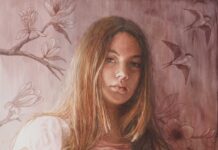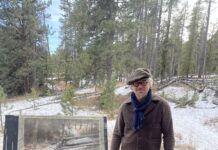Of all the stories published on American Watercolor, two stood out as your favorites from the past year. If they were among your most-loved articles, I hope you enjoy this second dose of inspiration. If they’re new to you, welcome to the party!
SIX SECRETS TO BETTER SNOW SCENES
By Sandra L. Strohschein
I admit it, I love winter. For me, snow is a wonderful painting subject. I like that I can fully utilize the white of the paper and also have a great deal of fun depicting light, shadows, and reflected light. There is so much bounce in winter. By “bounce,” I mean bouncing light. Also, reflected color! It’s everywhere in the winter, when so much of the landscape is covered in white.
In the winter, I think of water as being everywhere. Water in the form of snow covers the ground. Water rises in the air as the sun warms the earth creating a wonderful mistiness. Water blows sideways in the form of crystals when the wind picks up the loose snow and drives it across the landscape. All of this lends itself perfectly to the very “live” medium of watercolor.
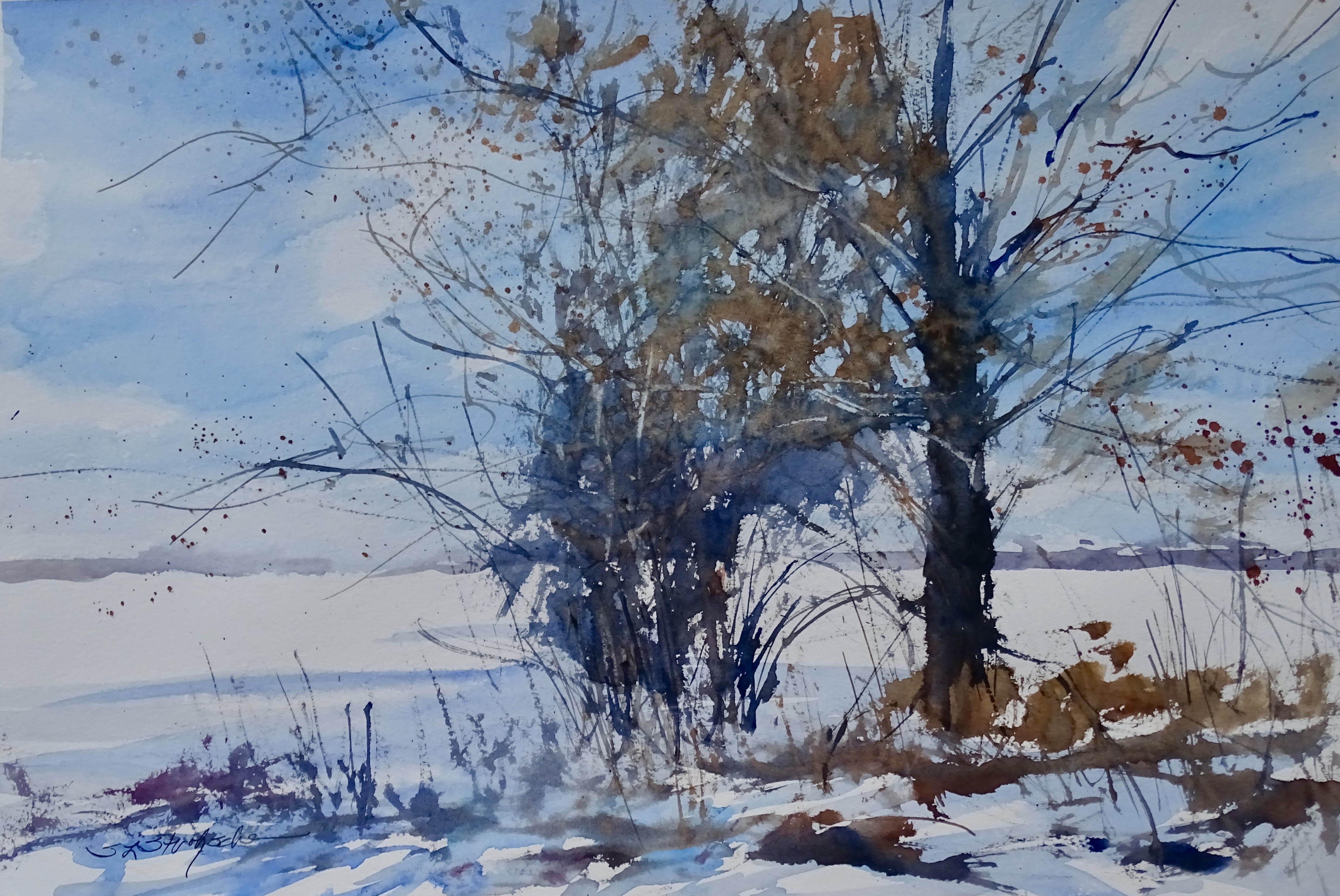
1. When I approach painting a snow scene, I have to remember a couple of things. First of all, photographs do not tell the truth; they tend to add dark values in the distance, giving too much information; when in truth, the distance should appear to fade away. When you paint on location, the distance is softer than it appears in photos. I always paint my distances wet-in-wet to keep it informative, yet soft and mysterious. Lose those edges!
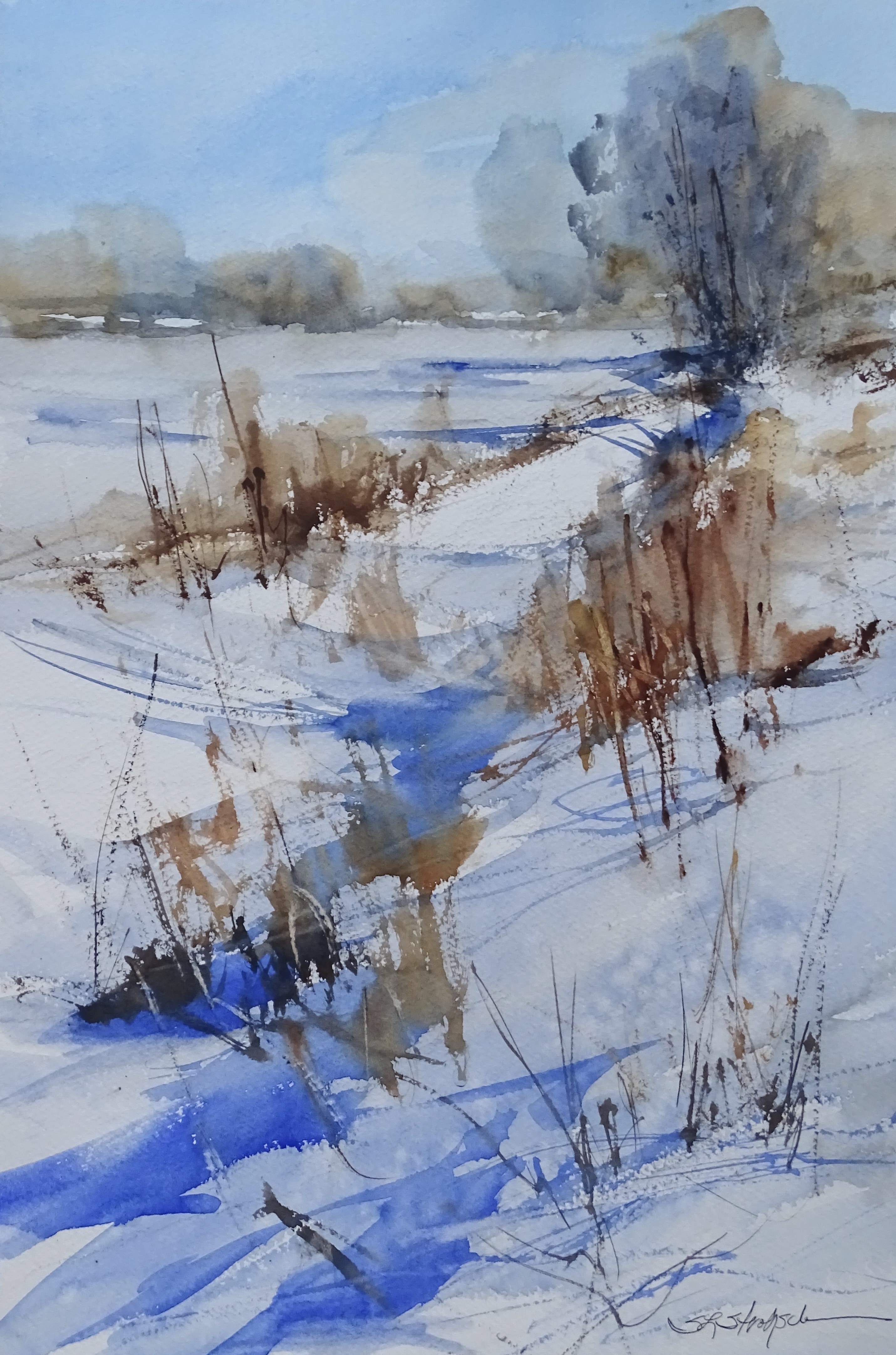
2. Before I paint a snow scene, I always plan where I want to save the white of the paper for my brightest values. When I lay down my first wash, I am careful to avoid wetting the areas where I want to hang on to my whites. Mid-day snow scenes will have a great deal of white paper showing, as you see in First Snow on 128th and January Sun on the Field. With the sun directly overhead, you’ll have almost blinding white snow and intense blue shadows. My snow scenes really began to live when I punched up the shadows with lots of varying blues. Maybe it is just where I live in Michigan near the Great Lakes, but our shadows really are deep cobalt blue. And I make the most of them in contrast with the white paper.
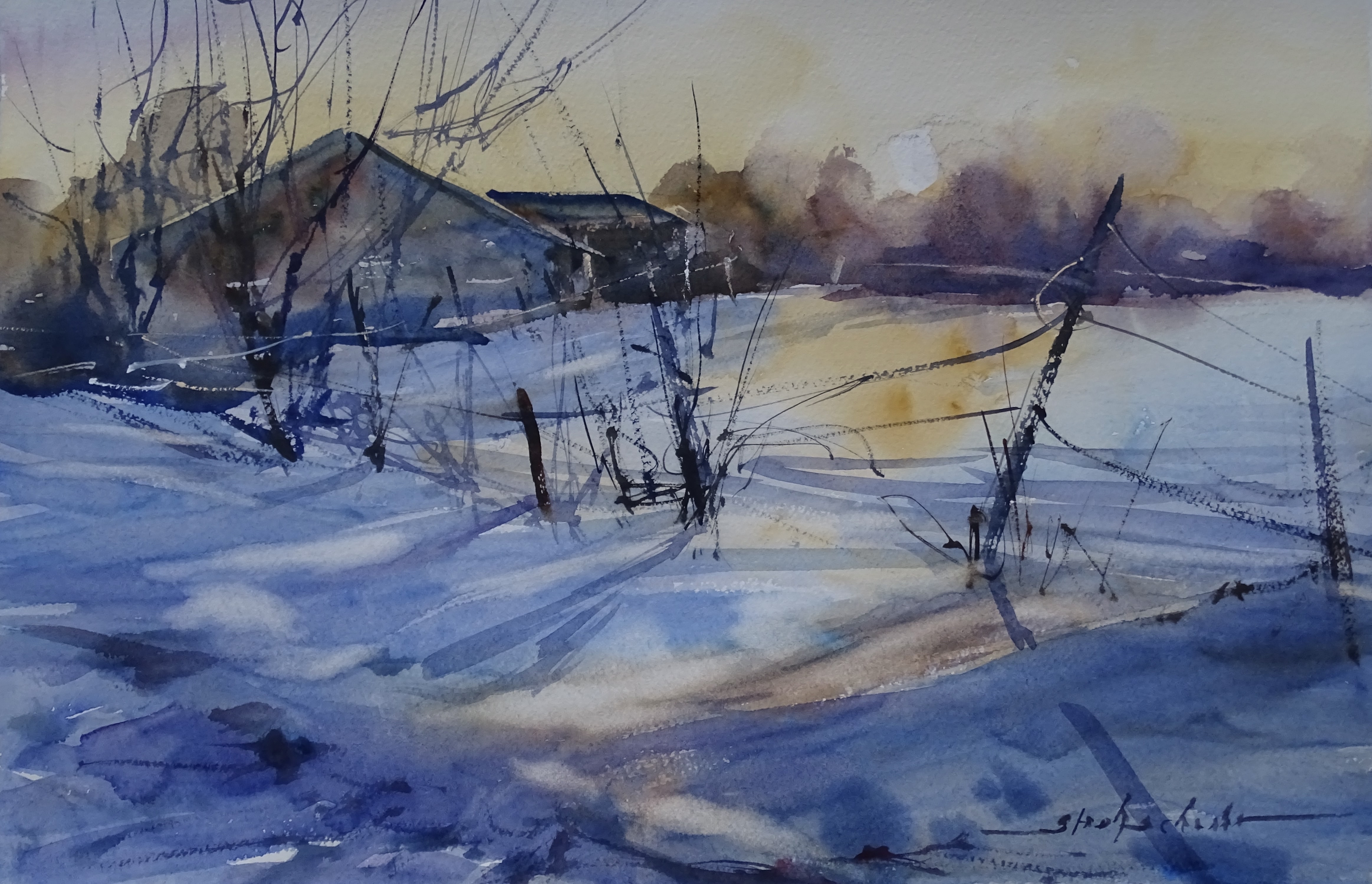
3. Another problem with photographs is that they also do not record reflected light. I have learned to observe carefully when I’m out shooting reference photos in the winter. I use my camera, but I also use my brain and my sense of smell, and record the air temperature as well. When I’m aware of all of the sensory moments while shooting a photograph, essentially I am painting en plein air — but with my body, not my brushes. Usually I carry all of this information into the studio the same day and sit down to paint while I’m still impressed with the moment that caught my attention. An example of reflected light is seen in Last Light of Day. You may notice that the snow in the middle area of the painting is yellow ochre. Like the surface of water, the snow at this moment in the day reflected the color of the horizon as it turned brilliantly yellow gold as the sun set. Also in this painting, you will see the building on the left is lit at its base so it’s a much lighter value there than near the roof — this is reflected light from the snow near the foundation of the building.

4. We look at snow sometimes and see these beautiful sparkling diamonds and wonder how in the world to paint them? I have learned that the best way to indicate these moments is to use cold-pressed or rough paper, and then, much the same way you would indicate sparkles on the surface of water, with plenty of cobalt blue (or whatever color you are using for a darker value), drag your brush sideways across the paper, skipping over the pits of the paper. By allowing the paper and brush do the work, you have just effortlessly created sparkles — this is especially obvious near the fence line in Last Light of Day.

5. One of the finer points in painting a snow scene is realizing that what we think of as white is not white at all. To help visualize this, use your reference photos as a guide. Display or print them out as black and white, and study the values. You will see that the snow is rarely pure white. Only at mid-day do we see truly white snow. I had to learn with time and effort and many underwhelming paintings not to be afraid to paint white snow with ultramarine blue. Check out The Farm on Barry Street. Do you see white snow? Apart from a few skips and drags of pure white, no, but I hope you still recognize the scene as snow. Without the darker blue values I would have never been able to create the drama of the light breaking through the clouds. My snow often has every color imaginable in it, influenced by what is around the scene and what time of day it is, how warm or cold it is. There are so many opportunities to let watercolor truly sing in snow scenes. A perfect example of this is making varying degrees of shadows in the snow. I love to lay down a wash of blue in the foreground, then lay down the brush wet-in-wet here and there with more paint than water, allowing a dark impression to appear — like footprints. When this all begins to dry a bit, I may come back in and splash some pure water to dilute things a bit — this is where watercolor gets to play! You can see this technique in action in the foreground of January Sun on the Field.
6. The last trick that I keep up my sleeve for painting snow scenes is the use of a misting bottle. If I want to create atmosphere and things seem a bit too stiff, I just spray and blot here or there, usually on the sunlit side of a tree or building. This never fails to create a sense of cold and water in the air.
I hope my thoughts on painting winter scenes have helped. I wish you all the best, encourage you to never be discouraged. Have fun and let’s paint!
Start the new year with a big creative boost! Join top watercolor artists from around the world at Watercolor Live, a virtual art conference taking place January 26-28, 2023, with a Beginner’s Day on January 25.
THE REWARDS OF PAINTING FROM LIFE
By Keiko Tanabe
I’m on the road about half the year. No matter where I go or the reason for the trip, I always take everything I need to paint outdoors. In fact, my plein air gear is always the first thing I pack, because if I don’t get to paint for maybe two days, I get really cranky.
For landscape painters in particular, it’s the best way to capture life. Working from a photo may be easier, but the subject doesn’t move. Outdoors, the subject and the light are constantly changing. It’s challenging, but the experience is so important for learning how to observe and understand. I sometimes see students pull out their reference photo at the start of class and right away begin copying, without really thinking.

Also, you develop a sense of urgency. Because everything changes so quickly, you have to keep going, otherwise you’re lost. That’s good training, I think. You have to make the best decision possible, as quickly as possible, so that you can stay in the moment.
I know every painter is different, but if I worked from photos, I would think, “Well, I can paint anytime.” I would stop and have a cup of coffee. I would just be lazy. When I’m outside, working with a time limit, it keeps me focused.
Follow along as I paint La Paloma Theatre, a historic Spanish Colonial Revival-style movie theater en plein air in Encinitas, California, here.

